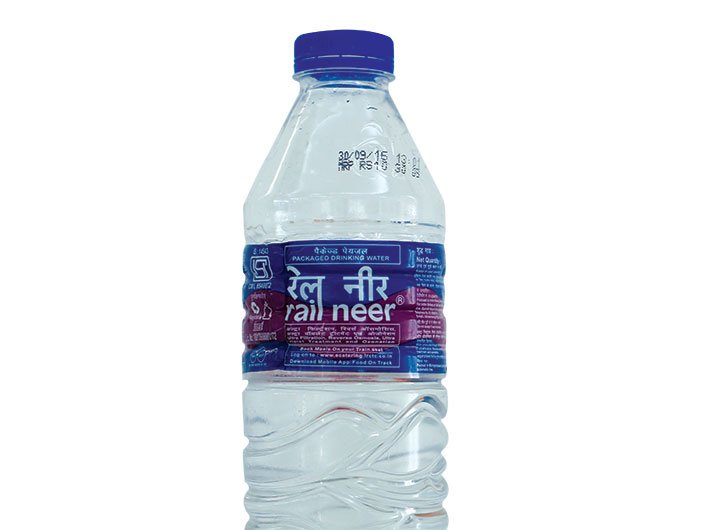IRCTC is setting up seven plants to meet the increasing demand of its bottled water – Rail Neer
The Indian Railway Catering and Tourism Corporation (IRCTC), the commercial arm of Indian Railways, intends to push the production of Rail Neer to bridge the gap between demand and supply.
The daily requirement of packaged drinking water over the Indian Railway network is around 30 lakh bottles, against which IRCTC’s capacity stands at 7.54 lakh bottles. It is slated to go up to 8.96 lakh by 2016-17.
More production
IRCTC will increase its manufacturing capacity by setting up seven bottling plants: in Hapur (Uttar Pradesh), Howrah (West Bengal), Vijayawada (Andhra Pradesh), Ahmedabad (Gujarat), Nasik (Maharashtra), Ambala (Haryana) and Lalitpur (Uttar Pradesh).
Once these plants are commissioned, the total production capacity would go up to 16 lakh litres per day.
Siyaram, group general manager (Rail Neer) of IRCTC, said: “There are multiple factors before a site is chosen to set up a bottling plant. We have to assess the feasibility of the project and examine how many stations would benefit from it. It should be kept in mind that entire production of a particular plant should get consumed within 300 kms.”
Two new bottling plants at Bilaspur and Nagpur are going to be operational by the end of the current fiscal. The existing six plants are at Nangloi (Delhi), Danapur (Bihar), Palur (Chennai), Ambernath (Maharashtra), Amethi (Uttar Pradesh) and Thiruvananthapuram (Kerala).
The Ambernath-based bottling plant is the biggest plant of the IRCTC in terms of production. It manufactures two lakh packaged water bottles per day and was built at a cost of Rs 25 crore in 2014.
The IRCTC is also toying with the idea of tying up with major brands of packaged water bottles to manufacture Rail Neer and supply it to stations where it is not available. The proposal has been sent to the ministry of railways.
There is also a proposal to build a plant at Nangal in Punjab alongwith National Fertilisers Limited, a mini ratna.
Rail Neer had contributed Rs 120 crore to IRCTC’s Rs 1,500 crore turnover in 2015-16.
A few years ago, the IRCTC had even mooted an idea of selling Rail Neer in the open market but the proposal soon fizzled out due to the tardy pace of setting up new plants.
According to an IRCTC official, two of the seven proposed bottling plants (Hapur and Howrah) would be owned by the enterprise, while the remaining would be set up in public-private partnership (PPP) mode under the build-operate-and-transfer (BOT) model.
Tenders have been invited for the proposed plants at Vijayawada, Ahmedabad and Nasik, while tenders for the Ambala and Lalitpur plants have already been awarded.
If sources are to be believed, the delay in getting land and other bureaucratic wrangles are the major reasons behind the slow progress in setting up more plants across the country. Due to scarcity of Rail Neer bottles, mainly in the rural areas, passengers have to cough up more money to buy packaged water.
“It often happens that it takes months, sometimes years, to get the land from the states to build a plant,” a source told Governance Now.
The IRCTC spends Rs 10-12 crore to set up a bottling plant, not counting the cost of the land.
Not a single bottling plant was set up by the railways for seven years after 2004. In 2011, IRCTC commissioned the Palur bottling plant near Chennai which partially caters to the demand of the southern region. The Amethi plant is the latest one which was commissioned in June 2015.
According to sources, IRCTC is finding it tough to provide Rail Neer in bulk in Kolkata, Hyderabad, Ahmedabad, Bhopal,
Nagpur, Bhubaneswar and Guwahati.
vishwas@governancenow.com
(The article appears in December 1-15, 2016 issue)

